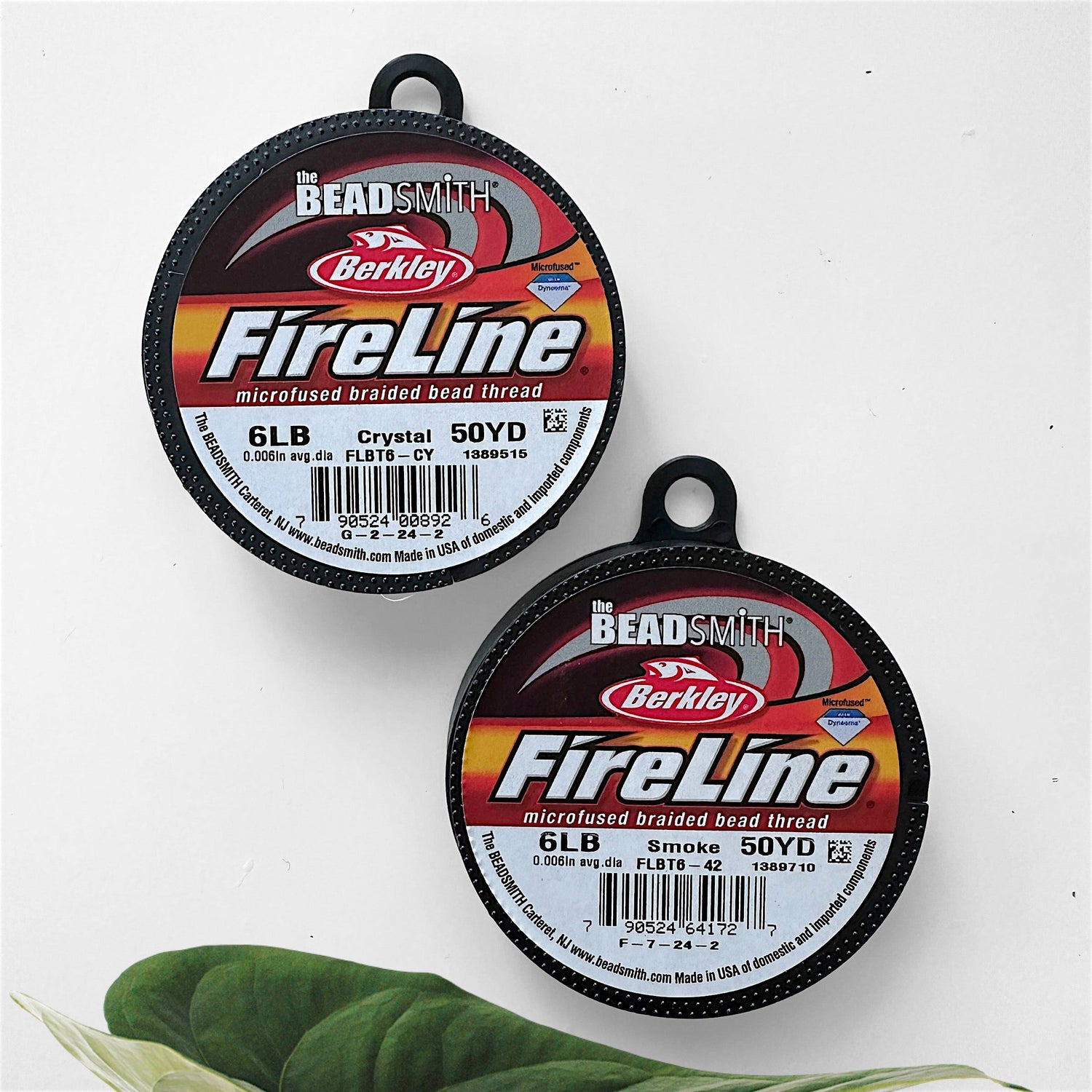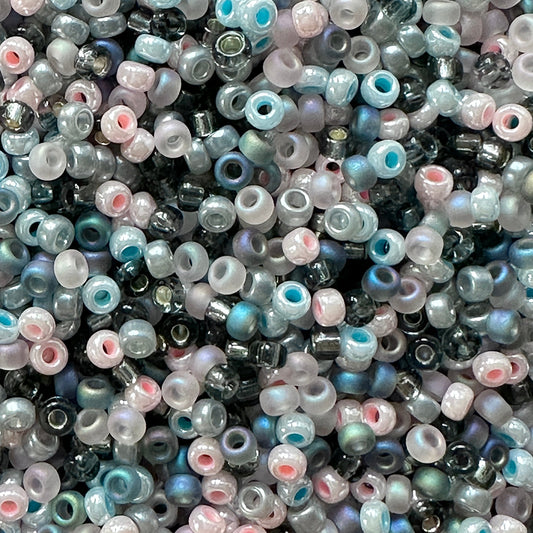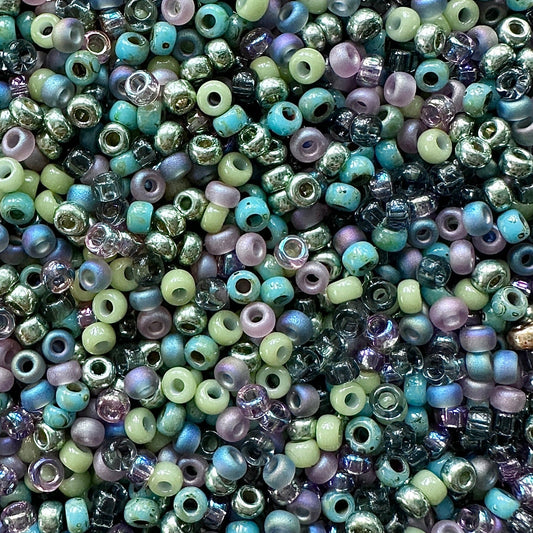What beading thread to use?
This is a common question. And rightfully so.
First, beading thread is mostly used for bead weaving (on and off of a loom) and bead embroidery.
Bead weaving involves stitching seed beads together with thread. Some common techniques include peyote stitch, brick stitch, herringbone, and square stitch. You can use these stitches to create a flat "fabric" or a three-dimensional shape.
Bead embroidery involves stitching beads onto a piece of fabric or leather with a needle and thread. This is how beaded brooches are commonly made.
The type of thread you need and ultimately decide to use depends on several factors, including what you're making, your personal preference, what is recommended in the tutorial you’re using, and so on. Whatever you choose, it’s generally not recommended to use regular sewing thread. Beading thread is stronger and will hold up better.

Thermally Bonded Thread
Thermally bonded thread consists of synthetic fibers fused together by heat and coated with polyethylene (like fishing line). This results in a smooth and incredibly strong thread that doesn’t stretch or fray. It’s also waterproof and resistant to tangling. But even if it does tangle, the tangles and knots are easy to remove without compromising the integrity of the thread.
Two popular brands are FireLine and WildFire.
FireLine comes in 4 diameters (0.12 mm, 0.15 mm, 0.18 mm, 0.2mm) and 3 colors (crystal, smoke, and black satin). The crystal color works well with most bead colors. Smoke gray works wells with dark color opaque beads, but the color is known to rub off. For this reason, FireLine released the color black satin with a more permanent finish (although it's more expensive).
WildFire comes in 2 diameters (0.15 mm and 0.2 mm) and a larger variety of colors (beige, black, blue, frost, green, gray, pink, red). Many beaders say the green and gray colors blend beautifully with most beads.
The diameter or thickness of the thread you need depends on the hole size of the beads you’re using and how many times you will pass through each hole. The 0.15 mm diameter (or 6LB) thread will work for most applications with 11/0 seed beads.

Nylon Thread
Nylon thread is softer than monofilament thread. Similar in feel to cotton sewing thread, but stronger. For this reason, some prefer to use nylon thread when making fringe earrings so that the fringe lays nicely and flows freely. Some may even use a combination of both thread types. FireLine for the weaved portion and nylon thread for the fringe.
There are many brands of nylon thread available. Some popular choices include Miyuki, KO, One-G, and Nymo.
Nylon thread is cheaper than monofilament thread and it comes in many colors. But nylon thread is more likely to split, tangle, and knot while you’re working. However, you can often minimize these things by conditioning your thread with wax. Some threads, like Miyuki, come pre-conditioned, which makes it resistant to tangles and fraying.
It’s also worth noting that nylon thread may stretch over time. So pre-stretching with a few good tugs is often recommended.
Nylon thread comes in various thicknesses. Again, the thickness you need depends on the hole size of the beads you’re using and how many times you will pass through each hole. Size B generally works for most projects using 11/0 seed beads and larger.
In summary, the thread you choose depends on what you’re making. Are you looking for stiffness? Or do you need more flexibility?
The decision may simply come down to your personal preference. Or a specific color that you need.
Tutorials, patterns, and other guides will most often suggest which type or brand of thread to use. So that’s also a great place to start.
As you get more experience and try different types of thread, you'll quickly learn which thread you like working with best 😊
For me personally, I use FireLine for mostly all projects that don't require fringe. And even for fringe earrings, I often use FireLine for the weaved portion and then switch to nylon Miyuki thread for the fringe. If I need my thread to match a specific color bead or the gold or silver findings I am using, I will use a nylon thread to match. I love how the silver Miyuki thread blends with silver findings and how the tan or gold Miyuki thread blends with gold finds.
Got Questions?
I realize this is a lot to take in and sort through as a newbie. So if you still have questions, please don't hesitate to email us and we'll get back to you ASAP.
Browse Our Best-Selling Bead Mixes
-
Stormy 11/0 Miyuki Seed Bead Mix
Regular price $7.25 USDRegular priceUnit price per -
Boho Rainbow 11/0 Miyuki Seed Bead Mix
Regular price $7.75 USDRegular priceUnit price per -
Succulent 11/0 Miyuki Seed Bead Mix
Regular price $8.00 USDRegular priceUnit price per -
 Out of Stock
Out of StockSouthwest 11/0 Miyuki Seed Bead Mix
Regular price $8.25 USDRegular priceUnit price per





